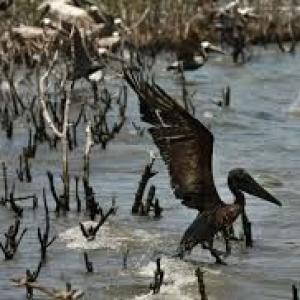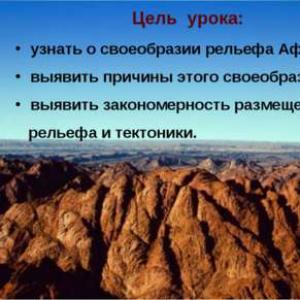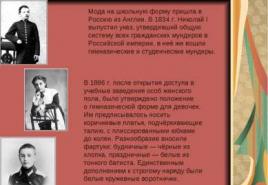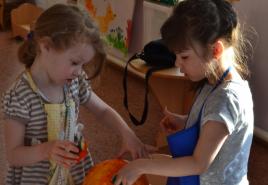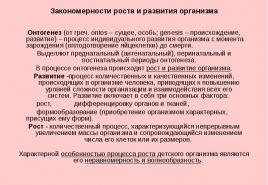Participation of residents of the Komi region in the First World War presentation, report. A participant in the first world war from Komi became the hero of the French film Komi during the first world war
Slide 1
Slide text:
Participation of residents
Komi region
in the first world war
Artist: Padalko Valentina
Alexandrovna, history teacher
Slide 2

Slide text:
Slide 3

Slide text:
Residents of the Komi Territory supported Russia's entry into the war. 57% of all men of the Komi Territory were drafted into the army during the war years
https://www.google.ru/url
Slide 4

Slide text:
Among them were the sons of peasants, priests, burghers. During the war years, 129 people volunteered from the Ust - Sysolsk district alone.
http://nevnov.ru/assets/images/kultura/voina.jpg
Many asked to be enrolled in the army to serve as "hunters" - that is, volunteers
https://www.google.ru
Slide 5

Slide text:
Thousands of natives of the Komi region passed through the army. Among them are many future politicians and cultural figures:
D.I.Selivanov, A.F. Potapov, A.P. Gichev, V.T.Chistalev, V.A.Molodtsov and others.
V.T.Chistalev
V. A. Molodtsov
D.I.Selivanov
Slide 6

Slide text:
He spent the entire first winter in Poland under constant enemy artillery fire, often hurricane. He was wounded, more than once he repulsed enemy attacks from the trenches.
https://www.google.ru /
The famous Komi politician A.M. Martyushev, with the beginning of the war, was enrolled in the militia squad as a non-commissioned officer
Slide 7

Slide text:
Poet A.A. Maegov, later a politician and scientist, fought with the Turks in Turkish Armenia, with the Austrians on the Southwestern Front
http://libr.rv.ua/ua/virt/105/
Slide 8

Slide text:
The future politician of the Komi Territory V.P. Yurkin,
- scientist and poet V.I. Lytkin,
- the future organizer of the physical culture movement N.M. Zherebtsov ...
V. I. Lytkin
http://www.flickr.com/photos/ruscadet/5407907599/
Many immigrants from the Komi Territory graduated from military schools and received the first officer rank of ensign:
Ensign of the Russian army, 1917
Slide 9

Slide text:
Alexander Nazarovich Izyurov from the village of Zelentsa, despite strong enemy fire, volunteered to scout if there were wire barriers in front of the enemy trenches. He delivered accurate information about the enemy's fortifications, for which he was awarded the St. George's Cross. He was soon mortally wounded in battle.
http://aleksandkosi.narod.ru/index/0-224
Komi warriors fought valiantly, and many laid down their heads on the battlefields
Slide 10

Slide text:
Tikhon Mashkalev from Kibra (Kuratovo),
-Aleksey Mezentsev from Troitsko-Pechora volost,
Petr Sazhin from Chukhloma (posthumously) and
Fyodor Mamontov from Ust - Nemskaya
volost (posthumously).
The following were awarded with St. George's Crosses for valor in battles:
https://www.google.ru/search
Slide 11

Slide text:
Food in the prisoner of war camps was meager, the prisoners were starving. Parcels from home, in which there were crackers and letters, helped to survive. They were allowed to write letters home. All letters are written in Russian. It was forbidden to write about how they lived in captivity.
Monument to Russian prisoners of war in the Zagan camp.
Many had to go to captivity in Austria and Germany.
Slide 12

Slide text:
D.A. Popov from the village of Glotovo recalled that during the offensive near the French city of Reims, the Russians captured three lines of German fortifications, but the brigade lost many people. 11 people remained in his company, all the officers were killed, and Popov took command. For another three days, the fighters beat off enemy attacks.
http://humus.livejournal.com/2222404.html
Komi had a chance to fight even in France as part of the Russian Expeditionary Force that landed there in 1916.
Slide 13

Slide text:
Slide 14

Slide text:
Sources
1. OE Bondarenko Stories on the history of the Komi region - Anbur. Syktyvkar. 2010
2.I.Zherebtsov, P.Stolpovsky Stories for children about the history of the Komi region - Komi book publishing house Syktyvkar. 2005 year
3.Lytkin, Vasily Ilyich - http://ru.wikipedia.org/wiki
4. Republic of Komi. At the helm - http://www.usnov.ru/2011/05/31/respublika-komi-u-rulya.html
5.Among the captives of the First World War there were more than a thousand natives of the Yarensky district
http://www.gazeta-respublika.ru/article.php/24163
6. The photo chronicle of the First World War was left to descendants by our fellow countryman Vasily Melekhin -http: //www.gazeta-respublika.ru/photos/photo-24164.jpg
The First World War in Russia is remembered much less often than about the Second. But on this page of history our people left many imprints: in 1916-1918 Russia sent an Expeditionary Force to help France and Greece. Among the soldiers of this corps was our fellow countryman Ivan Zhizhev. Yesterday at the I.A. Kuratov, a documentary film was shown, one of the heroes of which was a resident of the republic.
The documentary film “The Great War. Four Fates ”was filmed by the French: Philippe Claude was the director and Annette Gourdon was the producer. It was first shown on French television and at the Paris Documentary Festival at the Georges Pompidou National Center for Art and Culture.
The film focuses on four participants in the First World War: German Werner Dipman, French Louis Blanc, Englishman Hugh Richard Scarlet and Russian Ivan Zhizhev. The film is based on the letters of the main characters: witness recordings showed how the soldiers' hopes for a short war were crumbled when they faced the bloodbath of the first world massacre. For example, Werner Dipman took a camera with him into the heat of battle, planning to return home before Christmas. During one of the battles, his arm was crushed, and a shell fragment damaged the camera. Hugh Richard Scarlett left his wife at home, pregnant with their first child. Instead of the joyful birth of his son, he watched the comet pomegranates and dug endlessly trenches.
A rich source for the film was an archive received from a senior researcher at the Institute of Slavic Studies of the Russian Academy of Sciences, a member of the "Society of the descendants of the participants in the First World (Great) War of 1914-1918." Boris Morozov. The scientist's aunt was the stepdaughter of Ivan Zhizhev:
When I began to collect my family history, my aunt invited me to her place. She was the stepdaughter of Ivan Zhizhev: "Ivan Mikhailovich was on a trip around the world, there is a whole box of photographs." In addition to photographs, I found notes. I began to study the archive, make small publications, the historian said.
Boris Morozov did not come to participate in the creation of a documentary film by the shortest routes:
In France, I studied history, since I was directly connected with the Russian emigration. One of the branches of the research stretched to the high-profile surname - Andrei Musin-Pushkin (a direct descendant of the collector who opened the "Lay of Igor's Campaign"). His wife had an extensive network of acquaintances: she introduced me to Annette Gourdon, the film's producer. This is how the work on it began.
Ivan Zhizhev went to the front after completing his studies in Vologda. A soldier from the town of Kirul was a paramedic. He joined the Expeditionary Force when he was only 19 years old. In one letter, the young man shares his impressions of Paris, which greeted him and his fellow soldiers with a cheerful atmosphere of a holiday and beautiful girls. After that, the funny letters were replaced by short descriptions of the "life" of the war: the wounds of comrades and death.
In the future, Boris Morozov hopes that interest in the First World War in Russia will grow:
I know that there are relatives of Ivan Zhizhev in Syktyvkar. You can do a lot of this: even the story with the return of the corps to Russia is very complicated. Ivan Zhizhev returned only a year after the end of the First World War, arrived in the Arkhangelsk region, and he was immediately mobilized into the Red Army: he was the head of the sanitary point in Kotlas. My aunt recalled that he was proud to have participated in four wars: World War I, Civil War, Soviet-Finnish (at that time he was already a military doctor). He also went through the entire Great Patriotic War, ending it in Berlin as a major in the medical service.
Boris Morozov donated part of the archive he received from his aunt to the National Russian Library in St. Petersburg. He showed several photographs at the Kuratov Literary Museum.
STATE EDUCATIONAL INSTITUTION OF THE REPUBLIC OF KOMI "REPUBLICAN CENTER OF EDUCATION" CENTER OF DISTANCE LEARNING OF CHILDREN WITH DISABILITIES IN THE REPUBLIC OF THE KOMI "Window to the World" Kirshina Yu.A.: Evseeva Maria, (4th grade), Nabiev Zamin (8th grade), Kuznetsov Yegor (9th grade), Podorova Ilana (7th grade), Terentyev Artem (7th grade), Shagaeva Irina (8 kl.), Zubritskaya Darina (grade 7) Introduction The increased interest in the Komi Republic in the events of the First World War is associated with the sharply increased attention to the military past of Russia, as well as in connection with the 100th anniversary of its beginning. And it is important for us residents of our republic to remember that not only any war determines the fate of the soldiers - its participants, but they also determine the fate and results of the war, and therefore the fate of the country and our fate. Since the events of this war took place a very long time ago, there is not a lot of information, but the speech of L.A. Kyzyurov with a report on the topic: "Documents of the National Archives of the Komi Republic about the participants in the First World War." Goals and objectives of the work: Goal: perpetuation of the memory of the participants of the First World War, natives of the Komi Republic, through acquaintance with their names and exploits. Objectives: 1. To get acquainted with brief information about the First World War 1914-1918. 2. Distribute the roles of collecting material about the participants of the First World War, residents of the Komi Republic, among students: photojournalist, journalists, editor, analyst. 3. Collect the necessary material on the project topic, in accordance with your role, arrange it on a separate slide. 4. Analyze and combine the collected information into a single project. 5. Edit the received data. 6. Create a presentation of a single project. Contents 1. Introduction. 2. Theoretical part: 2.1. Brief information about the First World War 1914-1918. 2.2. Participation of the Komi Territory in the First World War 3. Practical part: 3.1. Archival data on the number of participants in the military conflict from the Komi Territory. 3.2. Biograms of some participants in the First World War, immigrants from the Komi Territory, according to archival data. 4. Conclusion 5. List of used sources and literature. Theoretical part 2.1. Brief information about the First World War 1914-1918. By the end of the 19th century, Germany's aggressive plans became finally clear to its neighbors. In response to the German threat, the Entente alliance was created, consisting of Russia, France and England, which joined them. The reason for the war was the assassination of the heir to the Austro-Hungarian throne, Archduke Franz Ferdinand in Sarajevo. The murderer was a member of a Yugoslav revolutionary youth organization. In total, 38 countries were drawn into the First World War. Date Main events 1914 hostilities unfolded on the Western (France) and Eastern (Prussia, Russia) fronts, the Balkans and colonies (Oceania, Africa and China). Germany captured Belgium and Luxembourg, and launched an offensive against France. Russia led a successful offensive in Prussia. In general, in 1914, none of the countries managed to fully implement their plans. 1915 fierce fighting took place on the Western Front, where France and Germany were desperate to turn the tide in their favor. On the Eastern Front, for the Russian troops, the situation changed for the worse. Due to supply problems, the army began to retreat, losing Galicia and Poland. Date Main events 1916 During this period, the bloodiest battle of Verdun took place on the Western Front, during which more than a million people died. Russia, trying to help the allies and pull the forces of the German army over to itself, made a successful attempt at a counteroffensive - the Brusilov breakthrough. 1917 the success of the Entente troops. The United States joins them. As a result of revolutionary events, Russia is actually leaving the war. 1918 the conclusion of Russia on extremely unfavorable and difficult conditions of peace with Germany. The rest of Germany's allies conclude peace with the Entente countries. Germany remains alone and in November 1918 agrees to surrender. 2.2. Participation of the Komi Territory in the First World War Ust Sysolsk Komi Territory at the beginning of the twentieth century was part of the Vologda province. Hundreds of soldiers, yesterday's peasants, and from the three northern districts - Yarensky, Ust-Sysolsky, Pechora, were called up to the fronts of the First World War. Their memory is now kept by the archives and descendants of the participants in the war. Residents of the Komi Territory supported Russia's entry into the war. During the war years, 57% of all men of the Komi Territory were drafted into the army https://www.google.ru/url Many asked for their enrollment in the army to serve as "hunters" - that is, volunteers Among them were the sons of peasants, priests, philistines. During the war years, 129 people volunteered from the Ust - Sysolsk district alone. Many rural communities and institutions of the Komi Territory received gratitude from the governor and the sovereign-emperor during the First World War. Practical part: 3.1. Archival data on the number of participants in the military conflict from the Komi Territory. From the territory of the Komi Territory, where about 157 thousand people lived, the scale of mobilization into the army could be up to 15 thousand people. infantry rifle unit artillery in engineer-sapper units, in the navy, in hospitals, fortress garrisons, supply services In Komi, there was practically no family left that would not have been affected by the general mobilization of 1914. From some families three and four brothers were called to war. Our Fatherland did not have a Victory Day in the First World War. However, despite the fact that the Russian soldiers did not have the opportunity to be crowned with the laurels of victors, they made a great contribution to the victory over Germany and its allies, pinning down half of all enemy forces and thereby ensuring the success of the Entente troops. 2.2. Biograms of some participants in the First World War, immigrants from the Komi Territory, according to archival data. Turiev Nil Stefanovich, originally from the village. Pezmog took part in the war since August 1914. He was awarded the St. George medal of the 4th degree “For the fact that on May 6 at the village. Full in battle under strong artillery, rifle and machine-gun fire of the enemy, the hunter volunteered to bring and bring cartridges when they were in urgent need. The second award - the St. George Cross of the 4th degree, he received “For the fact that, with his courage and bravery, capturing his comrades during a bayonet attack of enemy positions, he was the first to rush into the bayonets, which greatly benefited the overall success of August 11, 1915 with f. Green Palace ". In January 1916, N.S. Turyev was evacuated to the rear due to illness, died of relapsing fever. GU RK "National Archives of the RK". F.34. Op. 1. D.4437. L.266-267ob. Martynov Stefan Vasilyevich, from the peasants of the village of Lozym, it is written: “For being in the position at the village. On November 10, Neigardova volunteered as a hunter to inspect the enemy positions, at which he brought 3 enemy scouts and presented important information about the enemy, by order of the 25th Army Corps in 1915 No. 56 was awarded the St. George Medal of the 4th Art. for No. 58882 "(March 5, 1915). “For being in the reconnaissance team of the 4th battalion while the regiment was in position, I participated in reconnaissance every night, while showing courage and calmness. With an intensified reconnaissance of the (Bochenmkoy) ridge on February 17, he was in secret, he opened the presence of the enemy and completely reported it. Despite the strong and real fire of the enemy, he remained in his position and continued observation, was awarded the St. George Cross, Art. 4. for No. 171358 ". On September 17, 1915, in a battle with the Germans, Martynov was wounded in the right shoulder, was treated in a hospital, but the wound was so serious that on January 21, 1916. he was completely dismissed from service by the commission at the Ust-Sysolsk district on military service presence (May 17, 1915). GU RK "National Archives of the RK". F.34. Op. 1. D.4413. L. 32. The oldest of the Komi soldiers who participated in the war and were awarded for military distinctions was Vasily Ivanovich Misharin, born January 20, 1856, from the peasants of the village. Vazhkurya Nebdinskaya volost. During his service he was awarded 4 medals "For Zeal" and a medal in memory of the 300th anniversary of the House of Romanov. By the beginning of the First World War, he was 58 years old. Misharin's service record says: "From July 18, 1914 to August 21, 1915, was in the area of \u200b\u200bthe theater of military operations." October 17, 1914 V.I. Misharin, along with other distinguished soldiers, was awarded the St. George Medal of the 4th Art. His service record states that the award was presented "For outstanding dedication and courage during the siege of the Ivangorod fortress." Ivangorod - was a fortress on the territory of Poland, approximately halfway between Warsaw and Lublin, on the banks of the river. Vistula. The heroic defense of the fortress from the Austro-German troops lasted from the end of September to October 14, 1914 and ended with the defeat of the besiegers. Non-commissioned officer Misharin died on August 21, 1915. GU RK National Archives of RK. F.34. Op. 1. D.4410. L. 189-193. My grandfather I, Yulia Anatolyevna Kirshina, my great-great-grandfather Timofei Stepanovich Safronov (born in 1898), also participated in the First World War and was awarded the St. George Cross. But, unfortunately, he does not know the perfect feat. A photograph of him with the order on his chest was found in the family album. Conclusion As a result of the work done, we got acquainted with information about the participation of the Komi Territory and the exploits of some of its inhabitants in the First World War. They reflected this information in the project, thus achieving the set goal, contributed to the perpetuation of the memory of the participants in the First World War, natives of the Komi Republic. In recent years, the question of creating a Book of Memory of the Participants of the First World War in the Komi Republic has been raised. When creating it, it will be necessary to consolidate the efforts of all local historians and historians associated with this topic, as well as to unite all the collected information by local historians and historians of the republic. Our work is just a small grain in this big and difficult business. 5. List of used literature. sources and 1. OE Bondarenko Stories on the history of the Komi region - Anbur. Syktyvkar. 2010 2. I. Zherebtsov, P. Stolpovsky Stories for children about the history of the Komi region - Komi book publishing house Syktyvkar. 2005 3. Lytkin, Vasily Ilyich - http://ru.wikipedia.org/wiki 4. Komi Republic. At the helm - http://www.usnov.ru/2011/05/31/respublikakomi-u-rulya.html 5. Among the captives of the First World War there were more than a thousand natives of the Yarensk district http://www.gazeta-respublika.ru/ article.php / 24163 6. Our compatriot Vasily Melekhin left a photo chronicle of the First World War -http: //www.gazeta-respublika.ru/photos/photo-24164.jpg 7. Template source: Anastasia Vladimirovna Golyudova, Pushkin School No. 500 district of St. Petersburg, deputy director for educational work Thank you for your attention! Worked for you: Fotojournalist - Evseeva Maria; Journalists: Shagaeva Irina, Zubritskaya Darina, Nabiev Zamin, Terentyev Artem. Analyst: Egor Kuznetsov Editors: Ilana Podorova, Yu.A. Kirshina
FORMER
FIRST GERMAN WAR in the photographs of the Komi soldier Vasily MelekhinN. Surkov, Associate Professor of the Syktyvkar Pedagogical Institute, called the gift presented to him by the student as a real discovery. For one of the classes, she brought about a hundred old photographs kept in the Kuzbozhev family archive. The pictures show the First World War, captured by an amateur photographer, a soldier of this terrible war, Vasily Melekhin. The associate professor of the institute was amazed that such a valuable historical evidence was still hidden from human eyes. After all, photographs, unlike memoirs and even official documents, never deceive. Armed with a magnifying glass (and the quality of old daguerreotypes makes it possible to distinguish the smallest details), Nikolai Ivanovich found a lot of information. Although there are still questions. For example, who are these people captured by Melekhin? On them not only ordinary soldiers, but also generals. Maybe we have before us unknown photos of Denikin, Kaledin, Brusilov? So far, only the photographer himself has been “identified” - here he is in the picture, a kind of brave, seasoned Komi soldier riding an English Harley moped.
This publication is dedicated to the anniversary of that "first" war.

World War I broke out 90 years ago. Let me remind you of its chronology ...
August 1 - Germany declares war on Russia. In Constantinople, Germany and Turkey sign an agreement.
August 2 - Germany occupies Luxembourg and demands that Belgium let its troops pass. On the same day, Russia invades East Prussia.
14 august - Russia promises autonomy for that part of Poland, which is part of Russia, in exchange for the help of the Poles in the war.
23-28 August - the victory of Russia at Frankenau, the beginning of the Russian offensive in East Prussia.
September 6-8 - battle in the Masurian swamps, Russian troops occupy Lviv, the fourth largest city in Austria-Hungary.
September 28 - the first battle for Warsaw, German and Austrian troops are forced to retreat.
This is how it began. No one then could have guessed the scale of this war. It was attended by about forty states with a population of one and a half billion people, which was three quarters of the world's population. The total number of those mobilized into the army in all countries during the war years was about 74 million people.
The war lasted four years, three months and ten days and led to dire consequences (10 million dead and 20 million injured), plundering of national wealth, impoverishment and ruin of ordinary people. Only the direct military expenditures of the participating countries amounted to 208 billion dollars, exceeding ten times the expenditures of the world community on waging wars from 1793 to 1917.
Thousands of natives of the northern Zyryansk region were mobilized into the active army. Many of them remained on the battlefields or became disabled. According to the surviving documents of the Ust-Sysolsk district department of social security, according to our calculations, by June 1919, about 1,150 Komi soldiers had returned from captivity.

One of the participants in that war was a resident of the Pazhgi village of the Choivyv village Vasily Stepanovich Melekhin. He was obviously an inquisitive and enterprising person. It is known that years later, after the revolution, under the NEP in his Pazhga, he will master the artisanal production of sweets and will carry them to Ust-Sysolsk, hand them over to a private shop of a distant relative. And earlier, having got to the front, he just as easily mastered "daguerreotype", or, in modern terms, photography. What was he photographing? Airplanes, huge cannons, or a car repair scene. The car, disassembled to a screw, lies on the ground, and curious officers have gathered around.

But not only this interested the Komi peasant Vasily Melekhin. Here is the picture of the extraordinary beauty of the Trinity Church, not far from which the front line passed. He also photographed other Orthodox cathedrals encountered on the roads of the war.
But in the picture, Russian soldiers froze in formation. In the left hand of the cap, the bayonets of his own, model 1891, Mosin's three-line rifle gleam over their heads. An icon of the Mother of God is carried in the center. The soldier is blessed for the next battle. 
Vasily Melekhin did not pass by the results of the battle. Six soldiers carry out the coffin with the body of a deceased fellow soldier, possibly an officer, from the church. The mourning music is performed by a military orchestra, the people are sent to the place of farewell.
For almost a year there has been a civil war in the east of Ukraine, from where chilling messages come every day: shelling of civilians, torture, executions, looting ... How can this happen among people bound by a common faith, history and even blood?
Alas, bestial cruelty is a sign of any fratricidal massacre. And the civil war in the Komi region was no exception.
Why was Lenin shot?
Revolutionary whirlwinds reached Komi with a great delay, and mass armed civil strife began in the region only in 1919. Moreover, the forces of the parties were approximately equal for a long time. By the end of 1919, the Reds had about 22 thousand bayonets on the Northern Front, while the Whites had 23 thousand. They practically did not take prisoners in that war - they were stabbed with bayonets (they saved the cartridges) or thrown into the hole.

However, the Red Terror began much earlier. On September 24, 1918, the Bolsheviks shot the first group of public and political figures from Ust-Sysolsk in Kotlas. Among them were N. Mityushev, A. Welling, S. Klochkov, as well as Leonid Lenin, chairman of the Ust-Sysolsk Congress of Justices of the Peace. Meanwhile, another Lenin, Ulyanov, was sending telegrams to the province demanding more repression against "hostile elements."
The commander of the Pechora Territory, Moritz Mandelbaum (a former actor and junior officer of the Austro-Hungarian army, who was captured), distinguished himself with special atrocities. Residents of Pripechorye were killed on suspicion of "unreliability" alone. The surrounding villages were subjected to total plunder. According to eyewitnesses, after a raid by a gang of red punishers led by actor Mandelbaum, five horses remained in Izhma, and one samovar for the entire village was left from household items. But the Bolshevik wagon train with the loot consisted of 1,500 carts, stretching 30 (!) Versts.

Brother to brother
On December 22, 1919, on the ice of the Vychegda River near Pomozdino, white executioners shot Domna Kalikova. The girl was dragged to the place of execution - her legs and arms were broken during inhuman torture.
On December 25, the whites tortured to death the clerk of the Pomozdinsky volost council, Alexander Nikolaevich Panyukov, the brother of Vladimir Nikolaevich Panyukov, who was in command of the division on the Kolchak front at that time. Just because the humble clerk had such a relative, they threw him naked in a cold barn, then gouged out his eyes and lowered him alive into an ice-hole on the Pomos River.
In the days of the terribly cold December 1919, after the most severe bullying, Olga Alexandrovna Latkina-Trubacheva, a people's teacher of the Podelsky elementary school, was executed. She accepted martyrdom only because her husband Mikhail Trubachev was the commissar of the Izhmo-Pechora regiment. The newspaper “Zyryanskaya Zhizn” wrote in those days: “The raped teacher was stripped and barefoot was driven to execution, tied to a sleigh. Her body was never found. " According to some testimonies, the teacher's corpse was drowned in a well, according to others - thrown from the bridge onto the ice, where it was eaten by hungry dogs.
The name of Olga Alexandrovna is carved on a marble obelisk in the center of the village of Podelsk. On the same ob-lisk there are the names of the chairman of the executive committee Dmitry Motorin, chairman of the mayor's office Venedikt Motorin, brothers Vasily and Dmitry Zyuzev, who were shot or drowned alive in Vychegda.
In the village Skorodum was severely tortured (gouged out his eyes, cracked his skull), a communist teacher Aleksey Shomysov. In the village of Izvail, the whites gouged out their eyes and drowned the Ulyashev brothers - Dmitry, Yegor, Peter and Efim - in the Izhma River.
Landfill monument
Back in 1930, the All-Russian Central Executive Committee and the Council of People's Commissars adopted a resolution "On perpetuating the memory of the Red Army and Red Partisans by setting up monuments and ob-lisks." It was recommended to install them where the bloodiest battles took place.
The village of Nebdino was the scene of such terrible massacres. On December 8-9, 1919, a fierce battle ensued between the villages of Anikievka and Trofimovka. In a 40-degree frost, the Red battalions advanced on Trofimovka. The death toll went to tens. Not only the land was wounded, but also the huts of the village peasants. Even in 1994 I saw numerous traces of bullets in the houses of Trofimovka and Anikievka. At the same time, seven decades later, at the bottom of the local rivulets El and Chertas, the spent cartridges could be collected in handfuls.
In honor of the fallen, a monument was erected at the entrance to the village of Trofimovka from the side of Anikievka. But he has long been gone. At one time I saw this monument lying by the fence at the entrance to Nebdino. At the request of the Komi community, the monument was nevertheless removed to one of the courtyards of Trofimovka, where it probably rusts to this day.
At one time I had a chance to visit Hungary, Romania, Bulgaria, Yugoslavia. In these countries, I saw monuments everywhere, which are one hundred, two hundred, or even more years old. People cherish these monuments. It’s not just the notches of history. I think that any memorial reminiscent of the horrors and hardships of the fratricidal civil war in Russia could serve as an inoculation for new generations today. This vaccination does not allow such deadly diseases as hatred on ideological grounds, as the superiority of some people over others, to develop in a social organism.
Alexander PANYUKOV, historian.
I like
In Telegram
In Odnoklassniki
Blitz
Ukhta was declared the safest city in the republic.
Tour operators have canceled direct flights to the UAE from Syktyvkar. According to "Komiinform", this happened due to "empty seats", officially - the lack of occupancy of flights. Now you can fly to the UAE only from large Russian cities.
The verdict on the fine against the company, which did not complete the construction of the school in the Syktyvkar "Orbit", came into force.
In the Troitsko-Pechora district, rescuers helped the police to get out of the forest on New Year's Eve.
TOS "Vozrozhdenie" from the village of Loima, Priluzsky district, published its invention on the Internet - a nativity scene made of firewood.
Residents of the village of Maksakovka rescued a dog that fell into the hole.
Incidents and crime
In Ezhva, the quarrel between the roommates ended in tragedy.
In the suburbs of Syktyvkar, a 25-year-old nephew shot his uncle.
The enterprising syktyvkarka borrowed money from friends for projects that she was not going to implement.
The investigation into the 137 million rubles fraud case has been completed.
In the Koigorodsky district, a passenger car ran into a log that fell from a timber truck.
On the night of January 2, on the ski track in Inta, a drunk snowmobile driver lost control.
Most read of the month
- published on April 14, 2016 | under,
- published on 27.12. | under
- published on 06.02.2015 | under,
- published on 28.11. | under
- published on 28.11. | under,
- published on 20.12. | under

